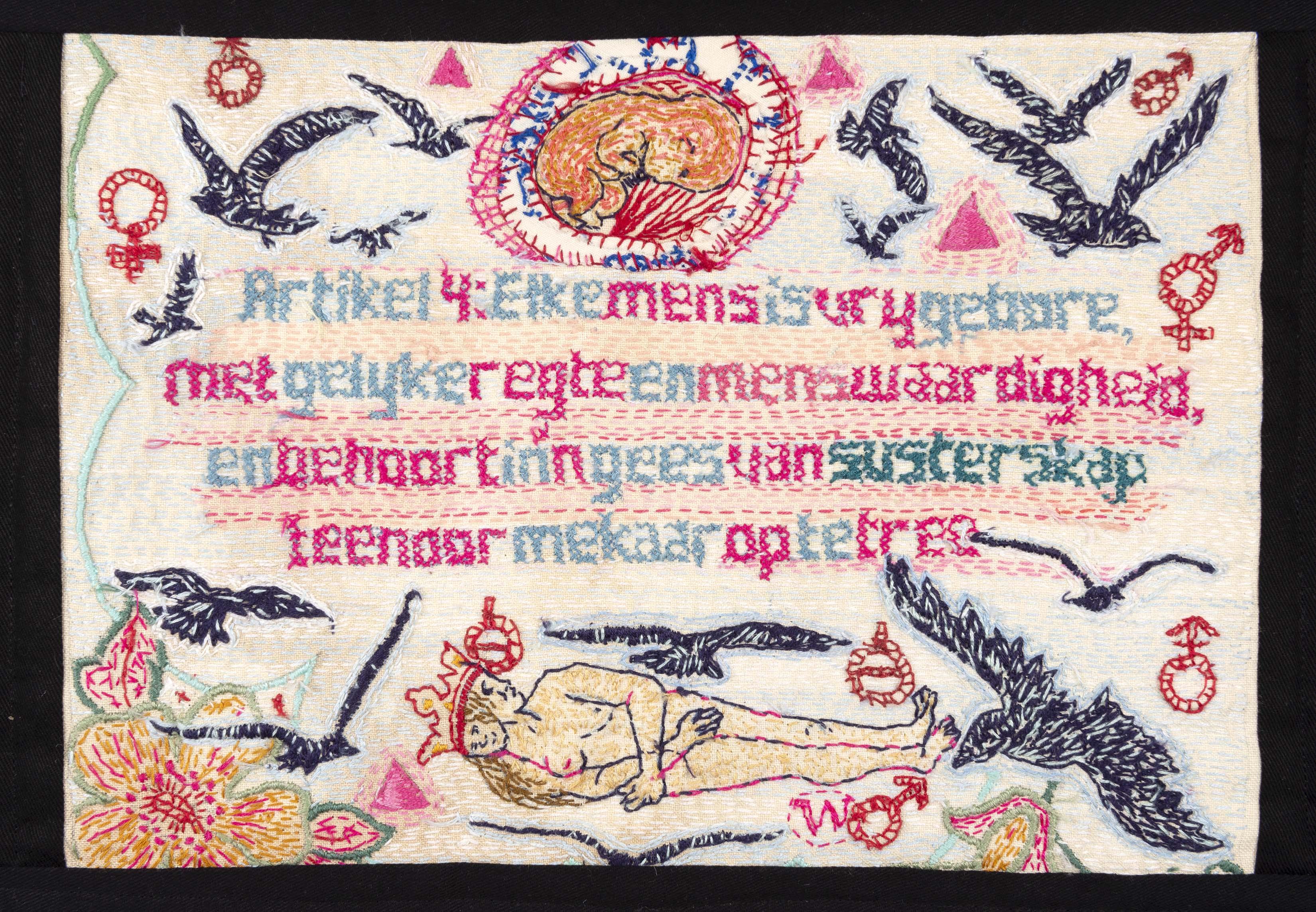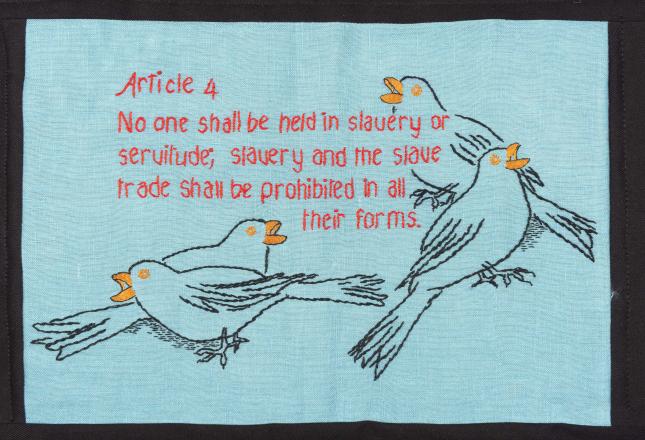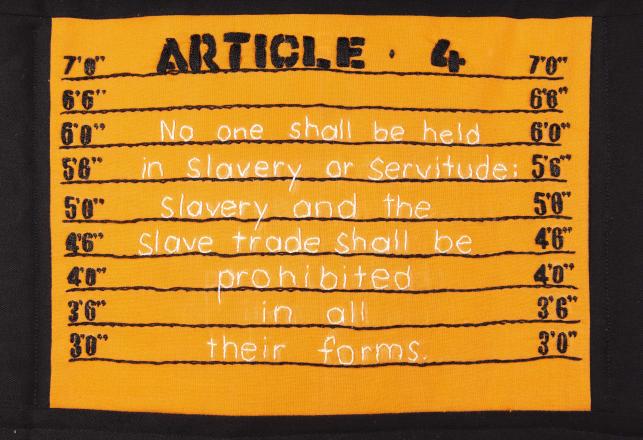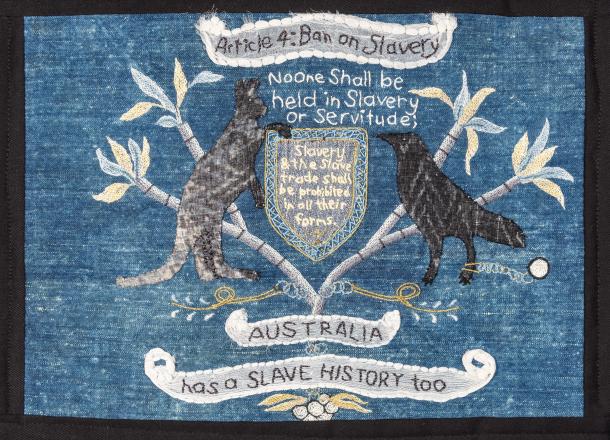Article 4
No one shall be held in slavery or servitude; slavery and the slave trade shall be prohibited in all their forms.
Willemien de Villiers
About my work
Note: Willemien accidentally sewed Article 1, not Article 4. In such a complex international project, such things are bound to happen. We’re only human!
As an introverted artist, you won’t find me on the streets, protesting the ills of the world. Craftivism suits my personality and talents, which is why I leapt at the chance to contribute to this powerful project.
The themes in my work have always centred on feminist issues; challenging and highlighting the skewed power dynamics of patriarchy by using craft techniques seen as stereotypically female. I stitch my stories by hand on found, stained and torn domestic textiles. My inspiration comes from police reports of domestic abuse, to stories told by friends and strangers. I also strive to celebrate the intrinsic goodness and compassion all human beings share, and to start a conversation about how we can move closer together.
The most vulnerable people in South African society are women and girls. Our entrenched patriarchal system means many women are still seen as property. Our national rape statistics are incredibly high, and despite having one of the world’s most enlightened constitution, many South Africans’ human rights are not protected.
- Willemien de Villiers
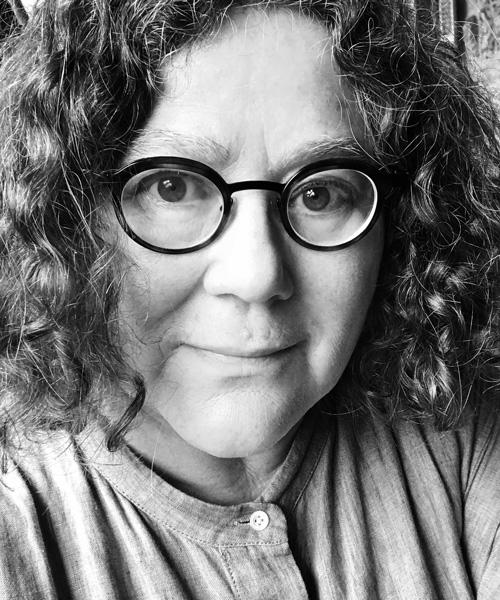
About me
I am a South African artist and writer, living and working in Muizenberg, Cape Town.
I was born during the very repressed era of Apartheid. Growing up in a completely segregated and separated community rooted in me a longing for connection and integration; something I continue to seek for in my art-making.
With hindsight, I now realise that the secret, unseen world of all living matter—first glimpsed under the microscope in my 10th-grade biology class—provided an alternative narrative to the one I was living: on a microscopic level, everything is connected.
I am still drawn to that which lies below the surface; hidden, obscured. I find the secret, pulsating world of plants especially inspiring; their relentless drive to procreate and thrive—or sometimes merely survive—is so similar to ours.
Sewing by hand demands patience and time. It is a form of meditation. A devotional act. It creates an emotional space to connect with memories, dreams, the day’s news, a friend’s tragedy. My current themes explore the issues of intimate partner violence, gender identity, misogyny and patriarchy.
While stitching, I feel connected to all the individuals, I assume mostly women, who have worked on the cloth before me. I like to imagine their circumstances and stories. Whether they were willing workers/embroiderers, or whether they were resentful and working from a sense of duty. The act of stitching can be a violent one—needles are very sharp—and indeed, blood sometimes flows. Whenever I accidentally prick myself, I always let the drops seep into the cloth I’m busy with, adding one more stain to the collective memory it carries.

